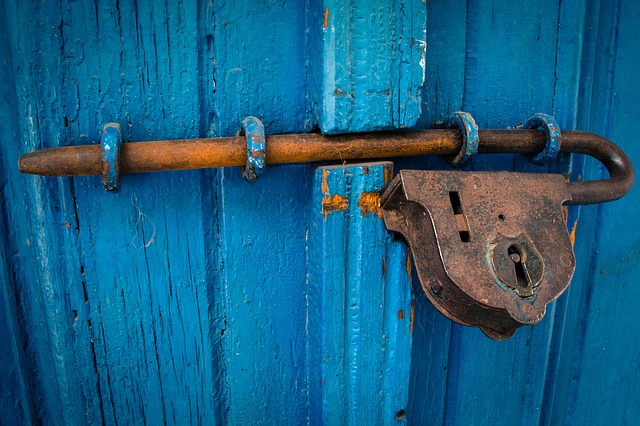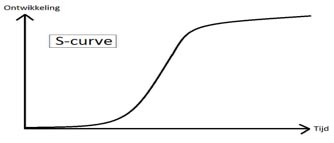Sustainable change… We’ve got work to do and Supertrash

Maybe you’ve noticed it as well, the news about the filing for bankruptcy of Supertrash, Olcay Gulsen’s Dutch based company. It is all over the Dutch national newspapers. How could it have happened?
The attention isn’t specifically because of the 150 employees or the company in itself, but I think it is because Olcay is famous and therefore interesting and has some value in the news. This way it makes sense that she appears in all the newspapers. 'She wants to focus more on her career in television' is what we can read in several pieces and she only had a minority stock-ownership of her own company. She had placed a Chief Executive Operator that was known for his work with companies like the Free Recordshop. Yet another company that no longer exists. We will probably hear and read all about it in the future I think and I am looking forward to it. At that time it will be interesting to see what has happened and if we can learn something from it.
A few years ago we used Olcay and especially the program ‘Werk aan de Winkel’ (‘Work to do’) (Dutch NPO, 2015) in which she acted as a guiding entrepreneur to set an example of truly starting a change within a company. Do you remember the television program? The company gets a complete makeover during the show. The power is in the steps the entrepreneur has to take and those steps were made really clear by the producers, at least, in my opinion. Steps and deals, commitment that made the necessary change truly happen. Change ON! And it increased the chances of success. So it seemed.
After the show, we talked about some observations we think are relevant in truly making a change according to us.
- There is an absolute need to change
The entrepreneur wants to and has to change
He does not know how to change, but is willing to ask an expert - The expert critically analyses the market, the store, the product and the promotion and makes sure he turns every stone. This way the entrepreneur is confronted with his starting position.
- The expert offers a deal; 2 to 3 options from which the entrepreneur has to choose.
- The entrepreneur moves in, signs the contract to start making the change, his store is emptied and there is no way back.
The entrepreneur really cooperates during the reconstructions. - The entrepreneur and this staff are trained during the reconstructions.
- Time is invested in promotion and marketing, the new concept is properly introduced.
- After about a month after the entrepreneur has re-opened his store there will be a follow-up to see how he is doing in his new store, but also how he is doing on financial issues.
I do not want to link the bankruptcy of Supertrash to any of this, I don’t have enough information in order to judge whether the steps and procedures that ware mentioned in the series were applied to Supertrash too. And maybe it is not about that at all, but how you can really make a sustainable change, it takes more than just a good start to succeed in the future.
The example is there for us to learn from. Both from truly starting the change as from possibly letting go of the factors of success.
Of course really important in monitoring a change is how management works and acts and if they are setting a course of action and sticking to it. When we connect that to the commitment that is asked of the employees when a company is changing its course, it is interesting to see what happened in this particular case. Not to cast a stone but from a change-perspective point of view to see what we can learn from this example. An entrepreneur, the spiritual leader is of course able to leave in any phase of any company’s life span. Was that crucial in this case? What kind of an entrepreneur was Olcay, what kind of entrepreneur was needed and when you think about it, what kind of an entrepreneur are you?

The S-curve
In my advisory service I always use the S-curve making observations of the company and it’s management. The simplicity and recognizability of this business life cycle and the product life cycle are very clarifying. The curve shows the different phases and it shows in which of those phases the company currently is, so this is a good tool in order to reflect. In phase 1 The Innovation or in phase 4 Control and Maintain a new curve has already started in order to avoid the curve from winding back down. And of course 2 and 3 are there too.
By reflecting on these phases you will uncover what is really needed in an instant. In your team, in your company, it helps showing the best way to get there and change is more likely to come true using this reflection.
Watching the S(upertrash)-curve again and more closely is very interesting. You are able to watch the change through the S-curve, and there is even a kind of S-curve for changes as well. When you see how you can start a change it is all about sticking to that change, expanding it and gaining control over the new situation. All of this in order to know about which renovations you need to do in order to stay active, alert and up to date within your market. Every phase needs a specific approach in communication, training and effect. A connection with the Kubler Ross curve on how change is experienced and received is important as well and clarifies the do’s and don’ts. It shows the S(upertrash)-curve is declining and new innovation did not change that.
As a member of management or as an entrepreneur you can use the S-curve to discover your own path. Which phase fits you best and why and in which phase do you need to make sure there are others that help you do the right things. As an innovator you are capable of coming up with new ideas, you need the people that can really help you build and develop in order to get in control and being able to maintain that level of control. And don’t get me wrong; control is possible in many different ways, I don’t mean an overload of control. This is the phase of getting to the point where you need to have started new innovations, create a new S.
So what went wrong in our example of Supertrash? The new label which was introduced to boost the company didn’t turn out to be a success. Did it come to soon or to late or was everything else just not firm enough?
I will be reading about the follow-up of Supertrash more because it interests me and because I think it is a pity that this brand and the success story which went with it are going to vanish. Especially in case of the lesson-learned we get from this and we can use this in our consultancy and coach work. So, we’ve got work to do!
Interested in the first blog about “Sustainable change, work to do” it is also published in dutch at http://www.movinc.nl/blog/56-duurzaam-veranderen